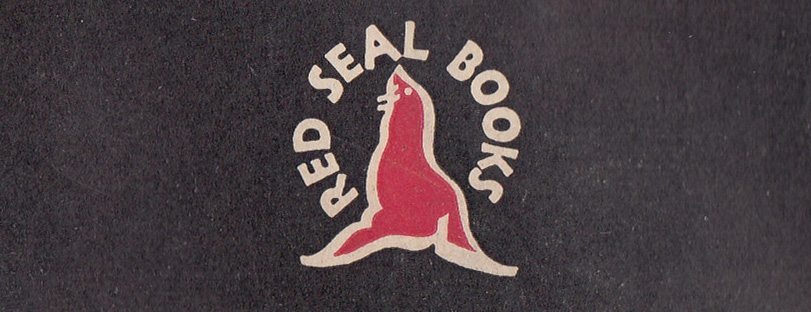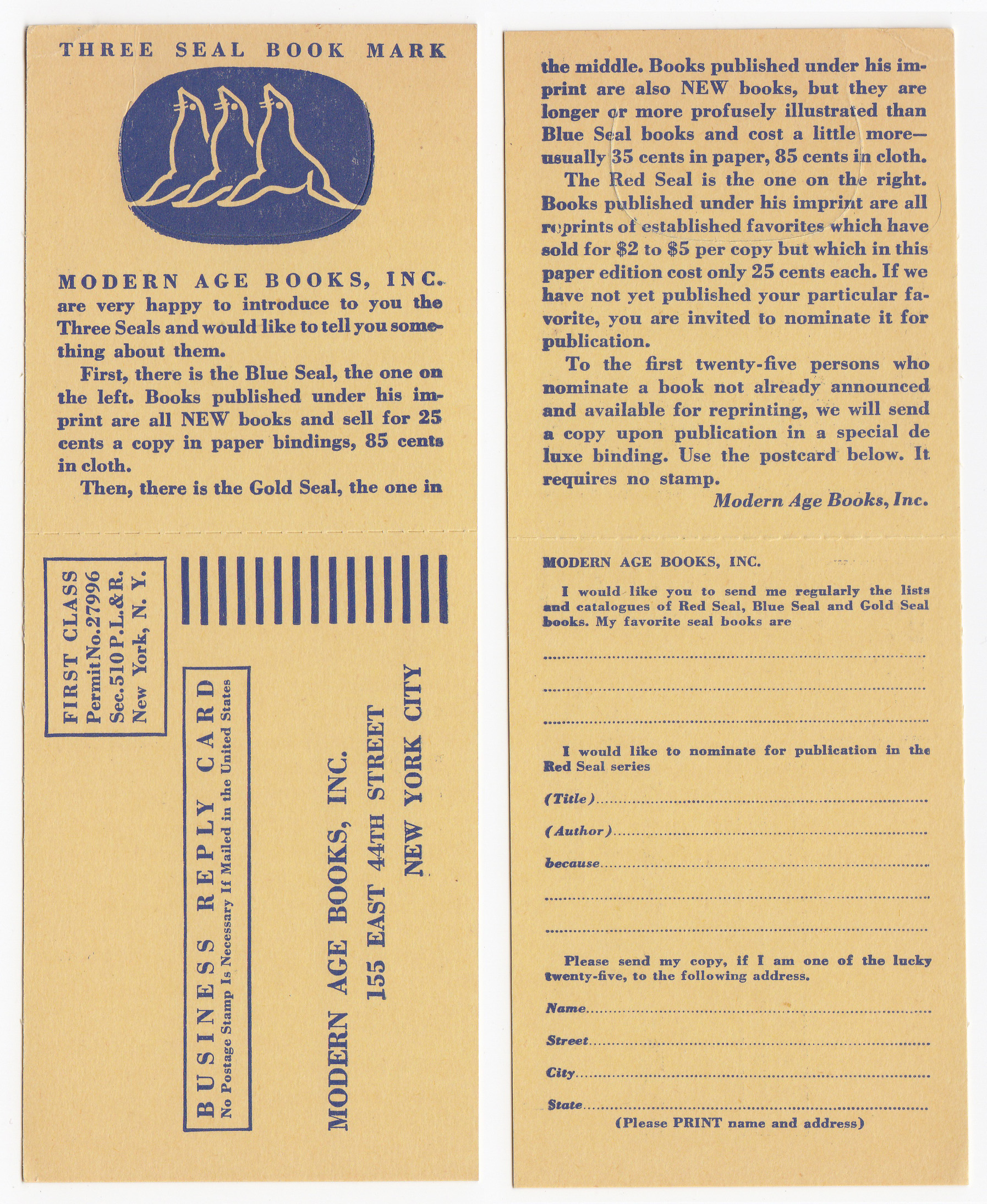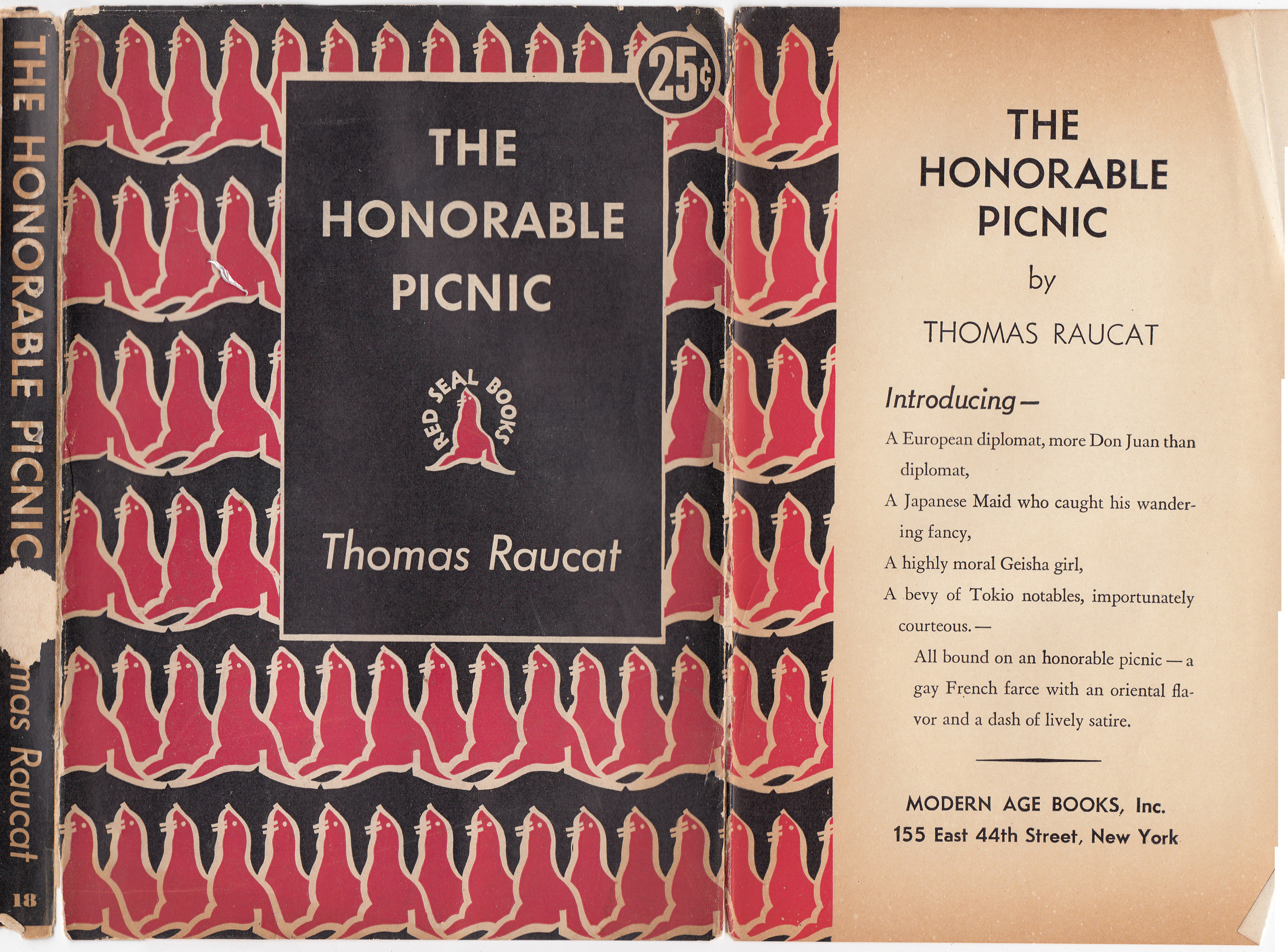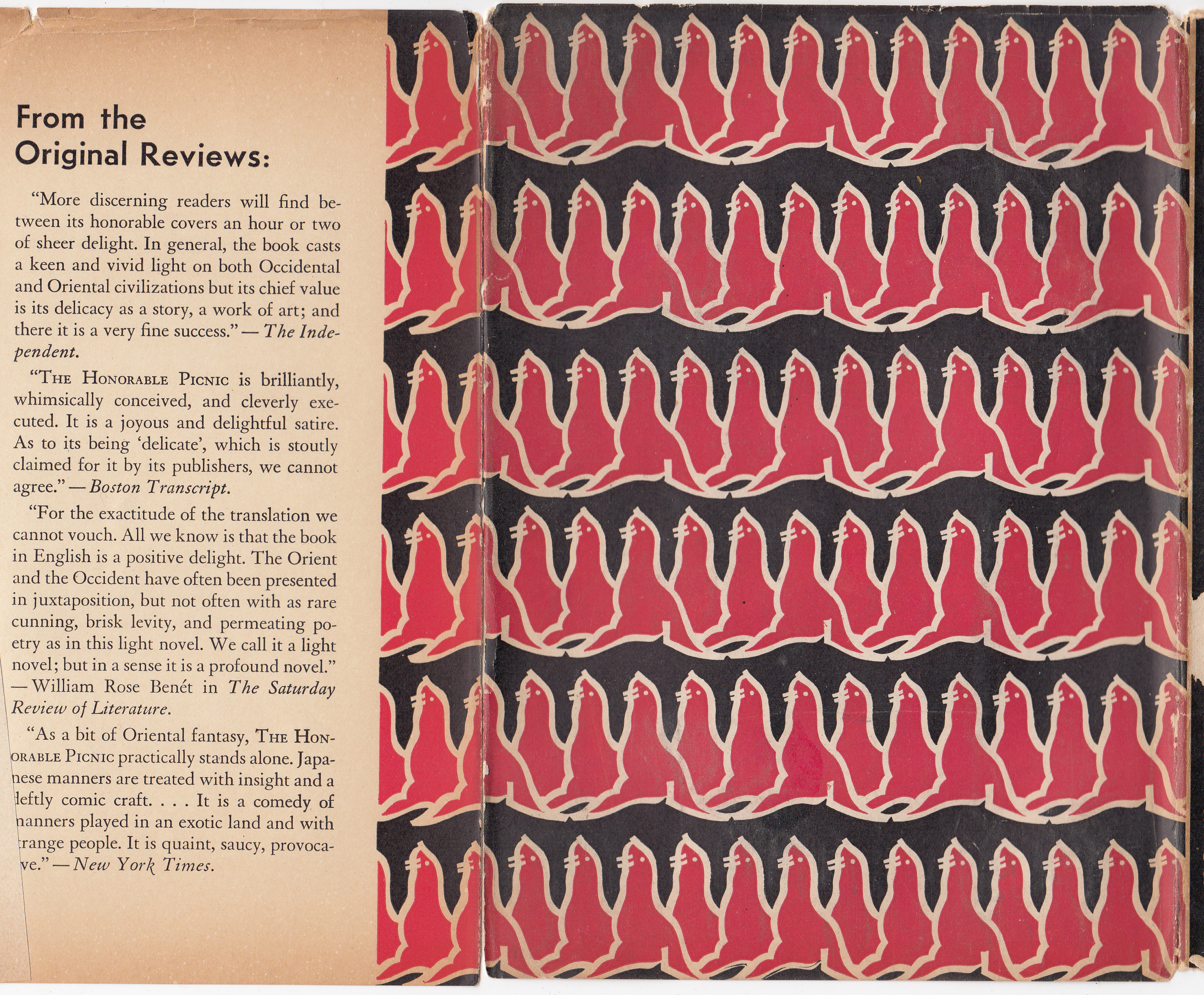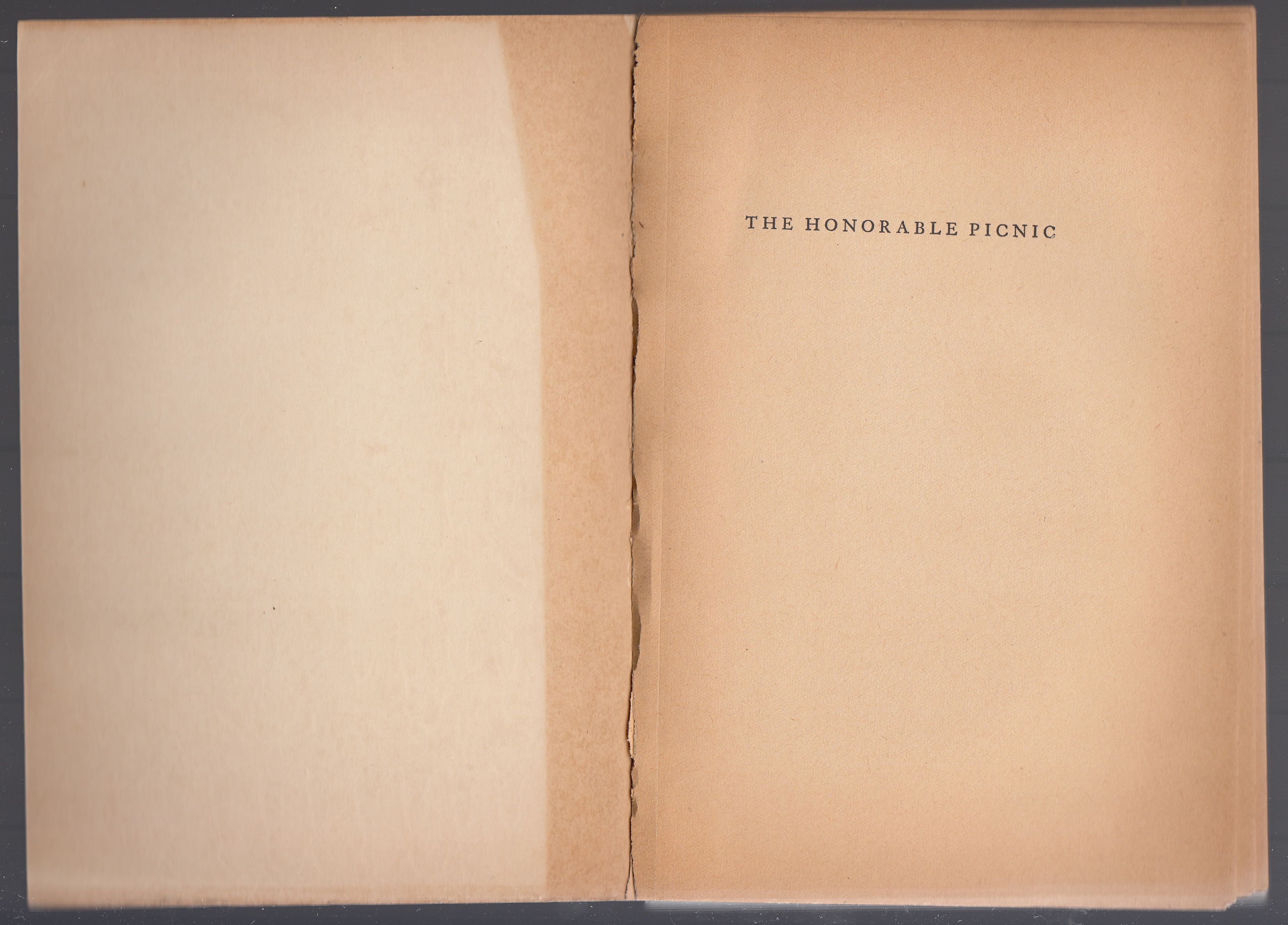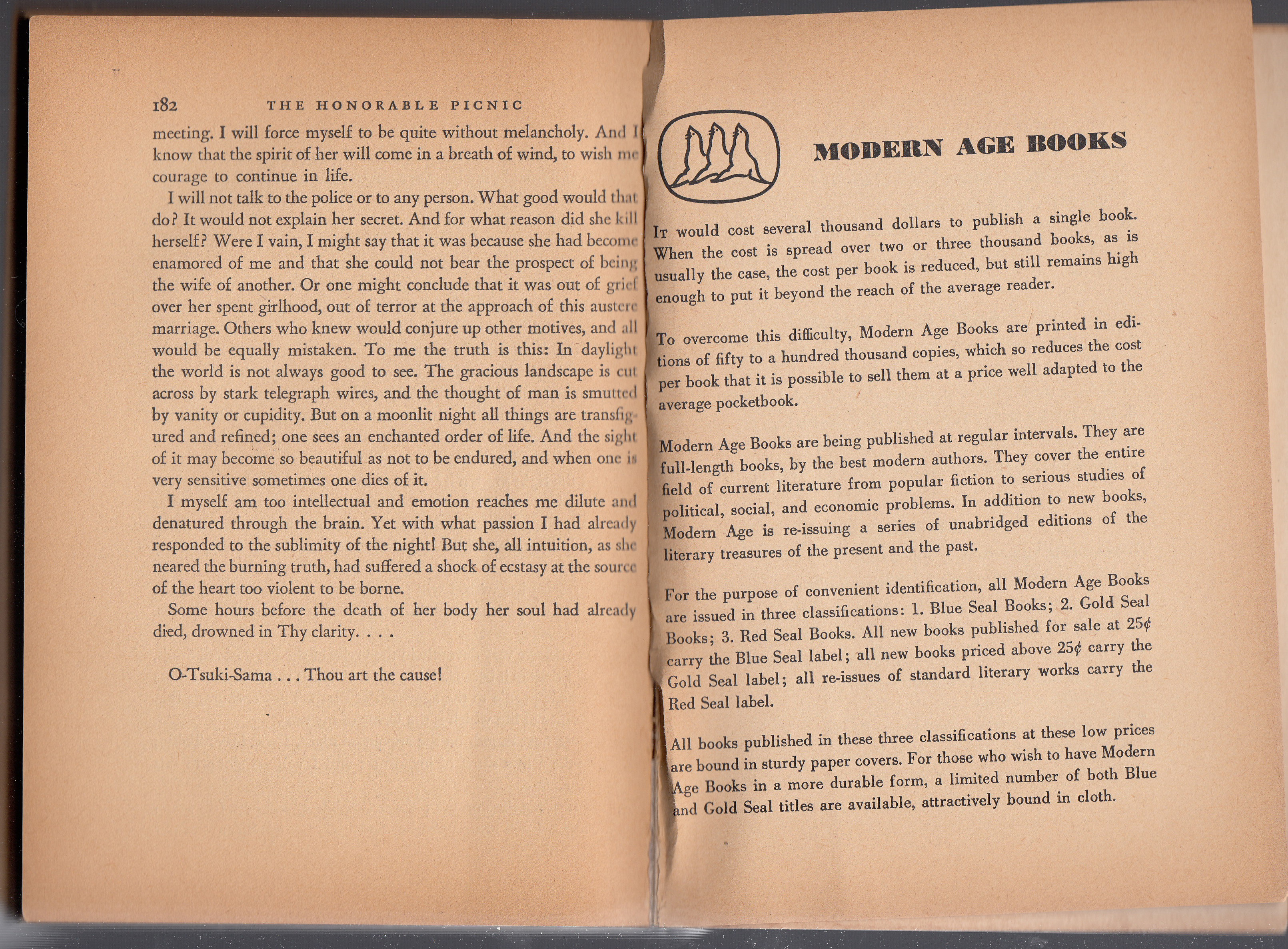Modern Age Books (New York, US)
Series dates: 1937
Size: 5.25″ x 7.5″
Update 6/6/2024

Richard S. Childs, an economist by training, founded Modern Age Books in 1937. Literary Guild founder Samuel Craig was Modern Age Books general manager and the managing editor was a former Macmillan employee, Louis Birk. The firm was established at 155 East 54th St., moved to 432 4th Ave. in 1938, and 245 5th Ave. in 1941.
Modern Age Books was one of a few firms that made a significant effort at publishing quality, paperbound books in the US before WW2 (Albert & Charles Boni’s BoniBooks is another earlier example). The firm had admittedly progressive and socialist leanings, which was reflected in some of its publications (labor, progressive economics, anti-fascist, etc.) and its relationship with The New Masses periodical (see below)
Modern Age Books followed the model set by Penguin in the UK. Its strategy emphasized inexpensive books with high-quality content and eye-catching designs sold through dime stores, drugstores, newsstands, and bookstores. Large printings (50,000 copies) were planned, and to save money, the books were printed by night crews at the Rumford Press in Concord, NH (Childs was from Norfolk, NH) (source).
Initially, the books were placed into one of three series, sorted by price point: Blue Seal Books, Gold Seal Books, and Red Seal Books. The Blue and Gold Seal Books were new titles, and the Red Seal Books were reprints. The Blue and Gold Seal Books were available in paperback and hardcover, and the Red Seal Books only in paperback. A “book service” (book club) was added in 1938 (see advertisement below). By 1938, titles appeared with the name “A Seal Book” or “Seal Books” as the initial three-series approach was discontinued.
The bookmark below was tucked in the copy of Paul Cade’s Death Slams the Door (1937) (see Blue Seal Books series entry). The bookmark, in a slightly cheeky manner, introduces the three “seals” or series – Blue Seal (new books, .25 cents paper / .85 cents cloth), Gold Seal (new books, larger or with illustrations (.35 cents paper / .85 cents cloth), and Red Seal (reprints, .25 cents paper).
The bookmark requests nominations for books to be included in the series. A tiny post-paid card can be detached from the bookmark and sent requesting new lists and catalogs of Modern Age Books as well as nominations. The three-seal publisher colophon is die-cut and can be popped out of the bookmark.
Modern Age Books was central to a discussion about the cost of books and problems of low-cost book publication and distribution in the US in the late 1930s. A centerpiece of this discussion was an article from The New Masses (November 2, 1937, p. 18-26) entitled “The Fight for Popular-Priced Books.” “New Masses makes an author, publisher, and reader survey in cheaply priced new and reprint books. Their cost and distribution problems.” The same issue has two full-page advertisements for Modern Age Books (shown below).
Four advertisements for Modern Age Books:
Top left and right: The New Masses, November 2, 1937. The advertisement on the left is a deal for four Modern Age books and a subscription to The New Masses.
Bottom left: The New Masses, April 12, 1938: this is the Modern Age Book Service (book club) debut. Bottom right: The New Masses, May 10, 1938.
 |
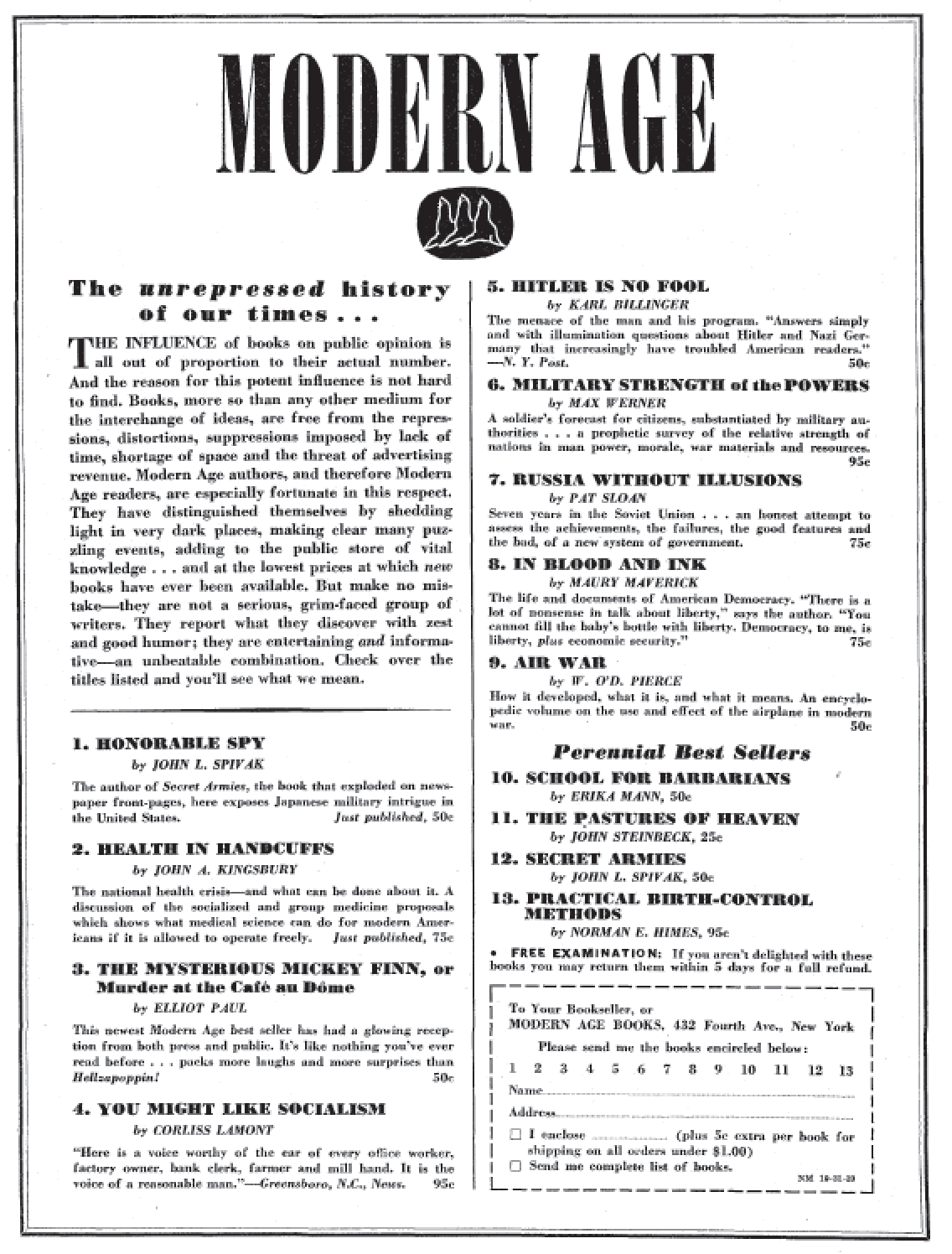 |
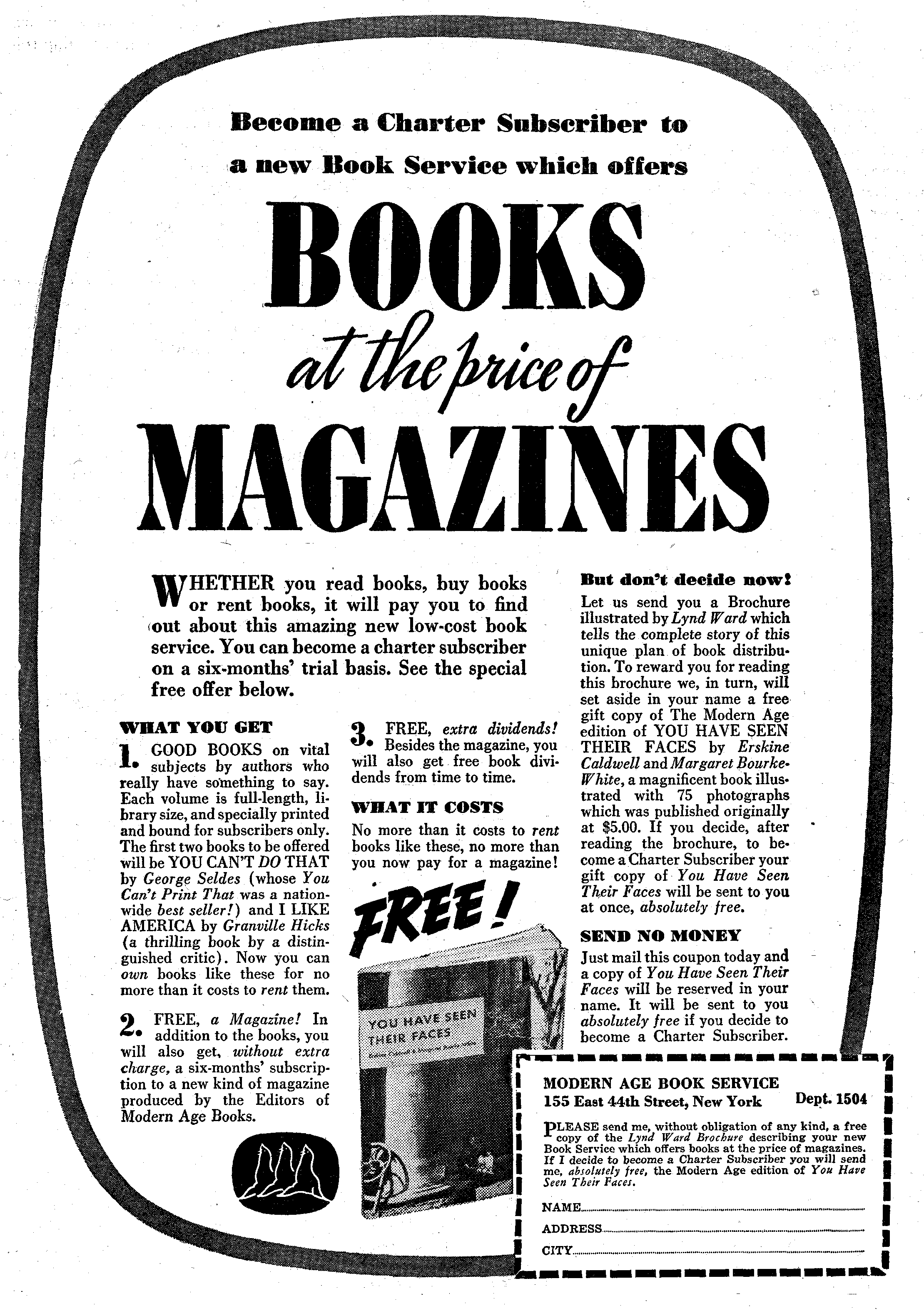 |
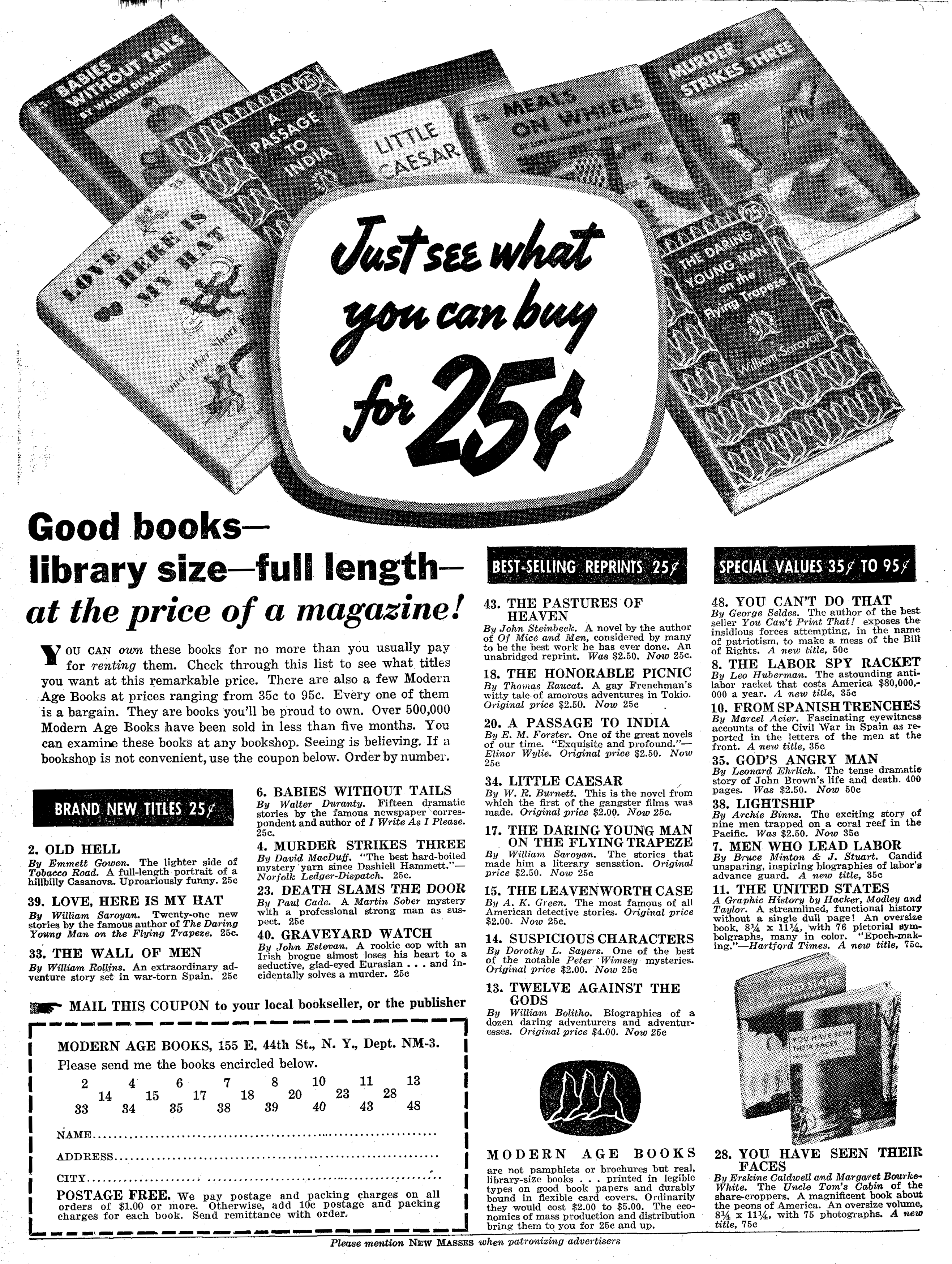 |
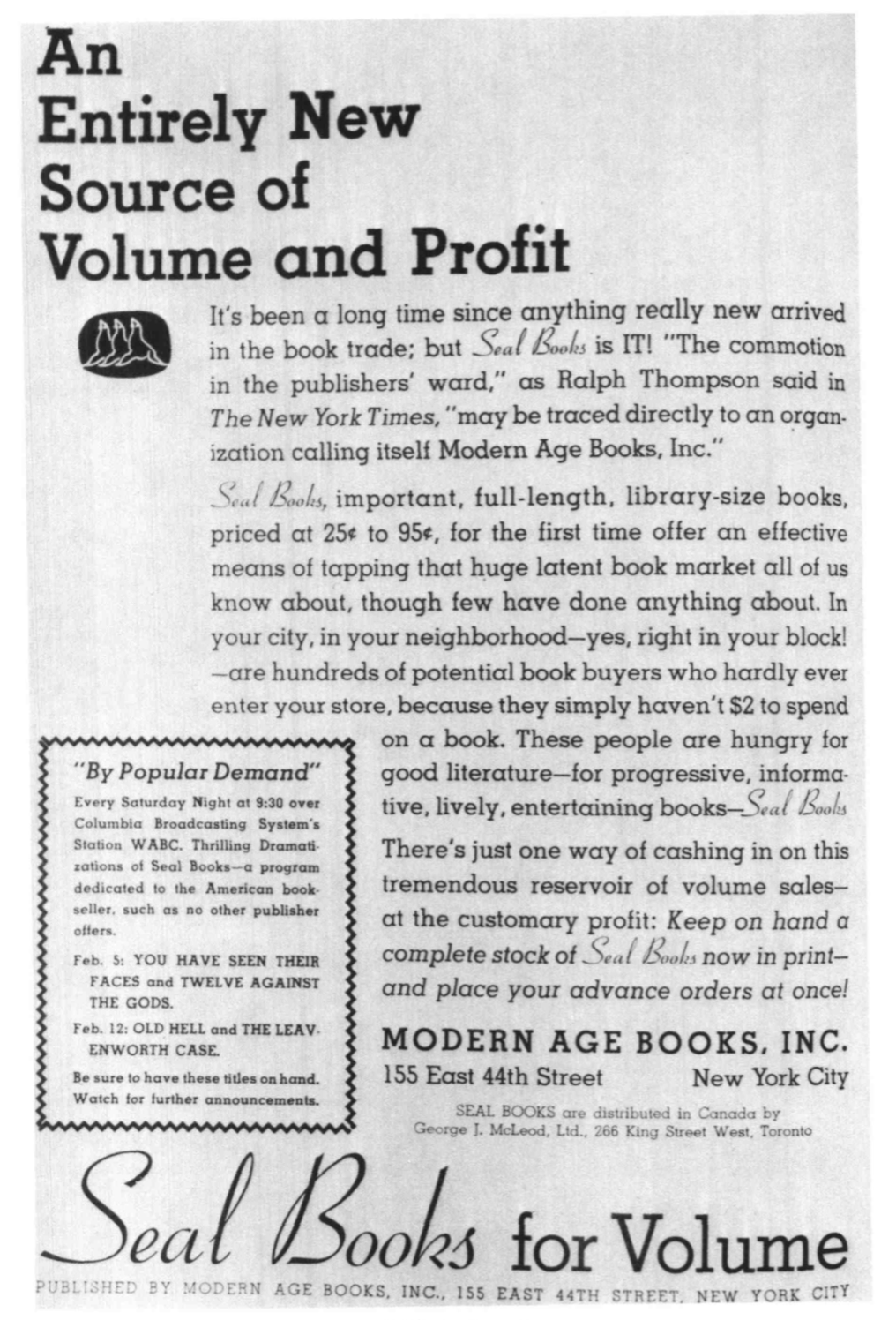 A 1938 advertisement from an unknown source, but probably Publishers Weekly (or a similar publication aimed at retailers), explains the publisher’s approach to book retailers and sellers. The advertisement indicates that Modern Age Books sponsored a radio show featuring some of its publications.
A 1938 advertisement from an unknown source, but probably Publishers Weekly (or a similar publication aimed at retailers), explains the publisher’s approach to book retailers and sellers. The advertisement indicates that Modern Age Books sponsored a radio show featuring some of its publications.
A series prospectus found in many Modern Age Books titles describes the publisher’s strategy to readers:
“It would cost several thousand dollars to publish a single book. When the cost is spread over two or three thousand books, as is usually the case, the cost per book is reduced but still remains high enough to put it beyond the reach of the average reader.”
“To overcome this difficulty, Modern Age Books are printed in editions of fifty to a hundred thousand copies, which so reduces the cost per book that it is possible to sell them at a price well adapted to the average pocketbook.”
“Modern Age Books are being published at regular intervals. They are full-length books, by the best modern authors. They cover the entire field of current literature from popular fiction to serious studies of political, social, and economic problems. In addition to new books, Modem Age is re-issuing a series of unabridged editions of the literary treasures of the present and the past.”
“For the purpose of convenient identification, all Modern Age Books are issued in three classifications: 1. Blue Seal Books; 2. Gold Seal Books; 3. Red Seal Books. All new books published for sale at 25¢ carry the Blue Seal label; all new books priced above 25¢ carry the Gold Seal label; all re-issues of standard literary works carry the Red Seal label.”
“All books published in these three classifications at these low prices are bound in sturdy paper covers. For those who wish to have Modern Age Books in a more durable form, a limited number of both Blue and Gold Seal titles are available, attractively bound in cloth.”
According to one source, “Though the firm had a large sales staff and made energetic promotion efforts, including contests, a book club, and exhibits, the mass market distribution policy was a financial failure. Modern Age was forced to raise prices and cut the number of copies in a single printing. It also began publishing titles in cloth under a new imprint, the Starling Press; Starling was discontinued in January 1940, along with the practice of publishing the same title in both cloth and paper. In 1941, the firm’s list included forty-seven titles in cloth and seventy-three in paper, but by 1942, Modern Age had abandoned the paperback format. World War II caused an exodus of the Modern Age management to the armed forces or other government service. The firm discontinued business in October 1942. Its assets were sold to other publishers, chiefly Viking Press.” (“Modern Age Books.” American Literary Publishing Houses, 1900-1980: Trade and Paperback. Ed. Peter Dzwonkoski. Vol. 46. Detroit, MI: Gale, 1986. 239-241. Dictionary of Literary Biography, Vol. 46. Dictionary of Literary Biography Complete Online. Web. 30 Nov. 2018.)
The Red Seal Books were modeled after other quality paperback series, such as Penguin, in the literary quality of the titles and uniform, modern design of the books. The Blue and Gold Seal books had unique jackets and more varied content. The books have a series number as part of the Red Seal Books and another serial number as part of Modern Age Books.
These 10 titles seem to be all that were published under the Red Seal Books moniker. All carry 1937 dates, and each was issued in copious numbers (at least 50,000). By 1938, fiction titles (still paperbound and jacketed) were issued under the name “A Seal Book” with a redesigned, common jacket that is more geometrical, like Penguin books.
Red Seal Books
#1, (Modern Age Books #12). Travels In The Congo, By Andre Gide
#2, (Modern Age Books #13). Twelve Against The Gods, By William Bolitho
#3, (Modern Age Books #14). Suspicious Characters, By Dorothy L. Sayers
#4, (Modern Age Books #15). The Leavenworth Case, By Anna Katharine Green
#5, (Modern Age Books #16). They Shall Inherit The Earth, By Morley Callaghan
#6, (Modern Age Books #17). The Daring Young Man On The Flying Trapeze, By William Saroyan
#7, (Modern Age Books #18). The Honorable Picnic, By Thomas Raucat
#8, (Modern Age Books #19). Mr. Weston’s Good Wine, By T.F. Powys
#9, (Modern Age Books #20). A Passage To India, By E.M. Forster
#10, (Modern Age Books #21). Blood Of The Conquerors, By Harvey Fergusson
The Honorable Picnic by Thomas Raucat was #7 of the Red Seal Books and #18 of the Modern Age Books. It was initially published in 1924 and issued by Modern Age Books in 1937. Raucat was the pseudonym of Roger Poidatz, a French WW1 pilot who ended up in Japan after the war training pilots. The Honorable Picnic consists of a travelogue of his experiences in Japan.
The distinctive jackets for the Red Seal Books consist of red pinnipeds on a contrasting black background, a play on the word “seal.” The title and author are included on the jacket spine, as is the Modern Age Books series number (#18 here), but not the Red Seal Books serial number. The series name and price (.25 cents) are included on the front of the jacket. The front jacket flap blurbs the book and its author and includes the publisher’s information.
The rear jacket flap includes quotes from original reviews of the book. The red seal design continues on the back of the jacket.
The book’s card binding repeats the design on the jacket, except that the price is not included on the book cover.
The half-title page directly follows the front cover of the book.
The title page and the “three seals” publisher’s colophon (the three seals being Gold, Blue, and Red Seal books).
The copyright page includes the original copyright holder (Librairie Gallimard, Paris), date, and “Composed and Printed in the United States of America by Union Labor at the Rumford Press, Concord, New Hampshire.” “Typography by Robert Josephy.”
A prospectus for the series is at the end of the book (the text is reproduced above).
The prospectus is followed by a list of the six Blue Seal Books, five Gold Seal Books, and ten Red Seal Books.
Two more titles in the series (these are the front of the dust jackets) include Andre Gide’s Travels in the Congo (#1, Modern Age Books #12) and T.F. Powys Mr. Weston’s Good Wine (#8, Modern Age Books #19).
